Cas Holmes has a degree in Fine Arts and has travelled widely as a means of developing her work as a textile artist. Specifically, she has visited Japan for two periods of long-term study, researched art based organisations (using re-cycled and found materials) in Canada, and most recently spent time studying and working in India and Australia.
Her work is strongly influenced by the juxtaposition of the natural and built worlds, and she is constantly developing techniques based around drawing and the use of colour. Found materials are layered in her work to reflect the rituals of making, and the passing of time to create pieces of partly recycled textile art.
A truly inspirational and innovative artist, we are delighted that Cas has shared some of her experience and expertise with us.
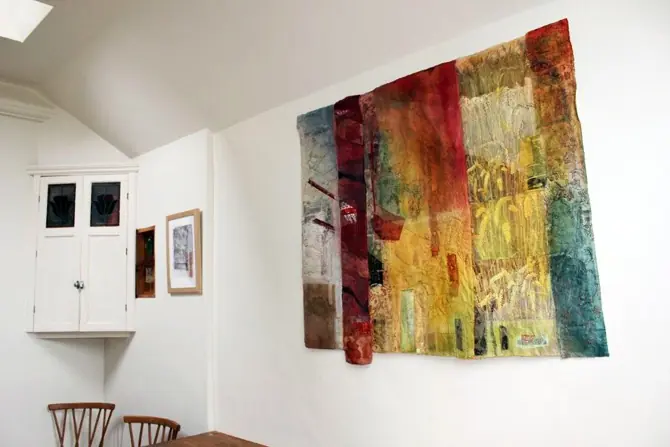
Reflections, life, home and work by Cas Holmes
Issues close to my heart, the threat to wildlife and wildflowers from urbanisation continue to find their way into my work. Many of the materials used in my pieces for my recent exhibition Urban-Nature, at the Knitting and Stitching Show were donated and came out of the informal collaborations with the people I met on a day-to-day basis. Family, students and friends give me old textiles, tablecloths, handkerchiefs and curtains to work with and also send images of plants and wildlife from their locality which may be of interest.
Life
Communication is a constant part of my practice and a stitched collaborative piece, Tea-Flora-Tales, composed of small pieces of textiles, paper and teabags is the on-going legacy of this interaction with others. In her earlier interview with me, Moira Vincentelli clearly states this aspect of linking life, community and work which has become a large and lasting part of my practice:
The cat jumps up on to the table and pads his way across the piece of work laid before me. Cas Holmes smiles affectionately as she lifts him off. The moment is symbolic – for Cas Holmes, life and art are inextricably linked.
The small terraced house on an inter-war council estate seems an unlikely place for an artist to live – a far cry from the stereotype of the old barn or the spacious studio. Cas Holmes’ studio – what would have been the main bedroom – looks out over the street and it doesn’t have net curtains. Life can enter in. The house is part of a larger social structure and this artist wants to be part of that. She grew up in Norfolk, trained at Maidstone College of Art, and has worked as a community artist and teacher for over fifteen years. As such her role has been to give a lead allowing others to find a voice through the creative process. She may suggest materials to use or themes to tackle, but it is the individuals and the group who create the work.
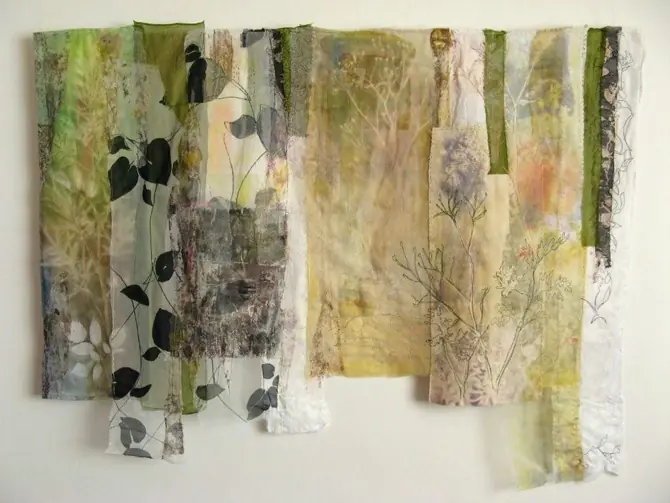
During her years as a community artist, however, she has continued to produce her own personal work which has been exhibited at a national and even international level. She has gained recognition as one of the most inventive artists using paper and textile as a medium. Being a practising artist and a community artist is a kind of double life but she suggests, ‘they are closely interwoven’. The low-tech systems she employs in her personal art practice are flexible enough to be used by people of all levels of skill and ability. It is one of the reasons why her work is accessible to a wide audience.
Moira Vincentelli (From Reflections catalogue 1999)
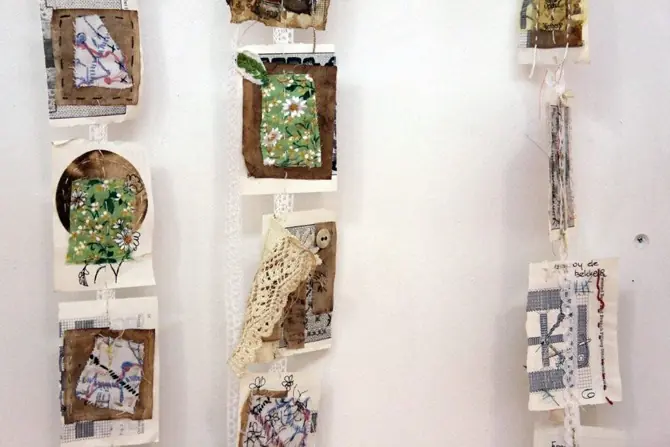
Home
The need to re-use does not stop with exhibitions and workshops. My home is largely furnished with op-shop finds, artwork and objects with found materials and furnishings found in a skip or items given to me. My partner Derek is a sculptor and a builder and pretty much makes anything we need and brings to the work an artist’s eye.
Our house is small so every space is used. Shelves above doors store books, cupboards are squeezed into small spaces and hide all kinds of materials and equipment. An old oak folding table in my workroom studio lifts to the wall when I need a bigger floor space (or have guests), when down, it reveals a handy space for dyes and paints. Canvas is placed on hooks to act as moveable surfaces for pinning work as it progresses.
During the early stages of my career, I worked mostly with paper and stitch and used papers made at a local paper mill specialising in hand-made papers, Barcham Green. Unfortunately, the mill is no longer in production, but thanks to the generosity of the owners, a pergola in my garden is supported by the ceramic lined pipes that carried the water to the mill.
This approach to using even the smallest scraps to make in the creation of my textile pieces transfers to the furnishings and cushions and even to my workshops. I keep cloth bags of fabrics for swaps in workshops and always seem to come back with new finds.
Everything made or built for our home carries its own story, something you do not usually get with things mass produced.
Our home is one not ruled by conspicuous consumption but rather one whose emphasis is on creating as small as environmental footprint as is possible. We do of course, buy new things but like to feel our art, home and work life reflects our creativity yet still echoes our environmental choices.
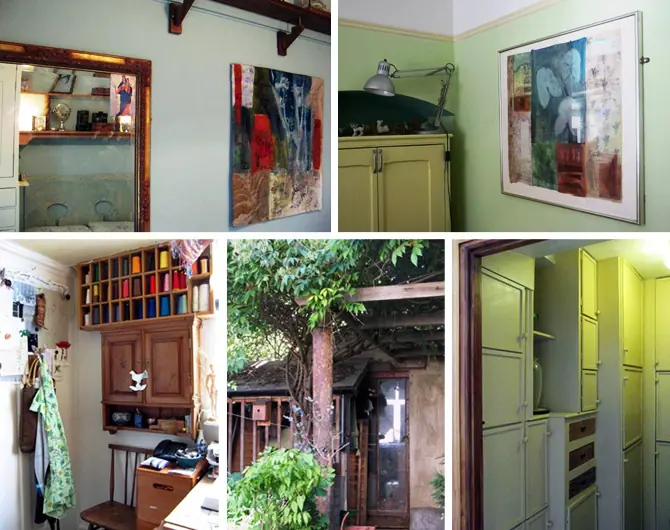
Work
My current work, Urban/Nature, shown at the Festival of Quilts and the Knitting and Stitching show. Looks at the relationship with domestic interiors and outside spaces. I use translucent layers, connecting paint, mark and print with the found surfaces of fabrics and papers I seek the ‘hidden edges’ of our landscape, the verges of our roadsides, railway cuttings and field edges, the places where our gardens meet the outside spaces. I describe the process of sewing and making marks in these pieces as ‘stitch sketching’ as a seek to capture the atmosphere of a place or moment or thing before it is gone. I prefer to exhibit my work unframed, without borders, revealing the raw edges and feel of the textile. This best suits my mode of expression with the materials.
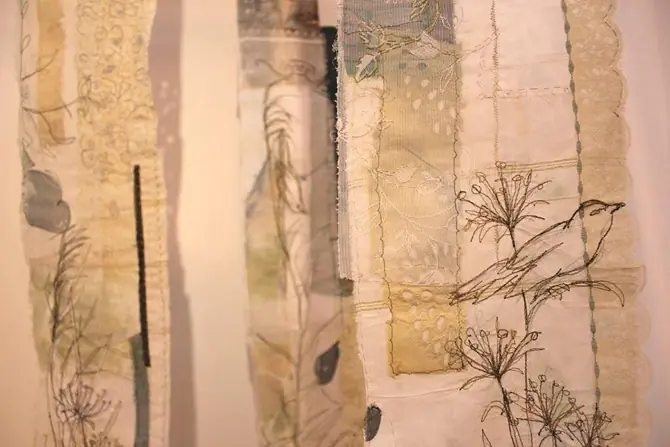
We are surrounded by things that are carelessly disposed of and overlooked, such as paper and other things we can gather at our footsteps. I don’t drive. When you walk, cycle, and use public transportation, you aren’t isolated. You make direct contact with the physical world. You have to dress appropriately for the weather! I live in an urban environment next to a park. It gives me a broad range of materials and references to work with both for my own projects and in projects with others. Clothing, plant materials, printed paper, I use whatever I find or am given. I love old fabrics. They’ve been washed so many times the fibres become very receptive to dyes and marks. I like to ‘destroy’ and remake things. My favourite found tool has to be a basic Bernina sewing machine I recovered from a skip. It responds to my movements as a draw with stitch. If I ever lost it, it would be very hard to replace.
Cas Holmes
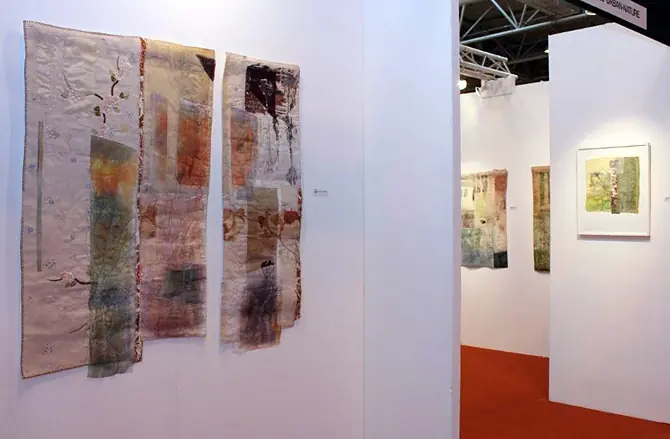
See updates on:
www.casholmestextiles.co.uk
www.casholmes.blogspot.com
If you’ve enjoyed this article please leave a comment below.
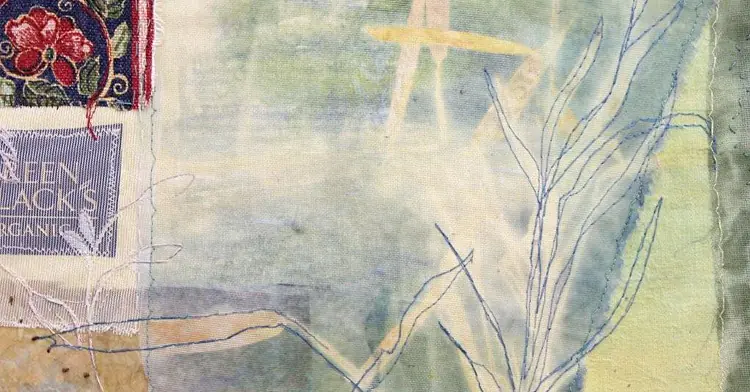
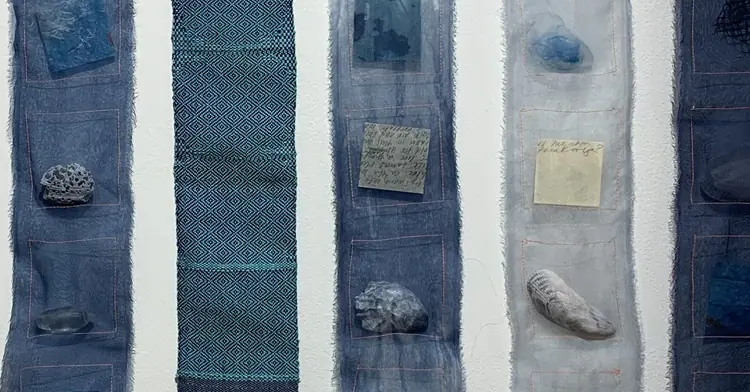
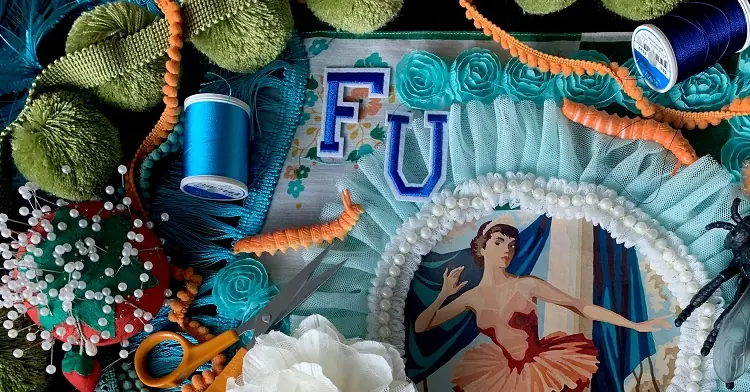
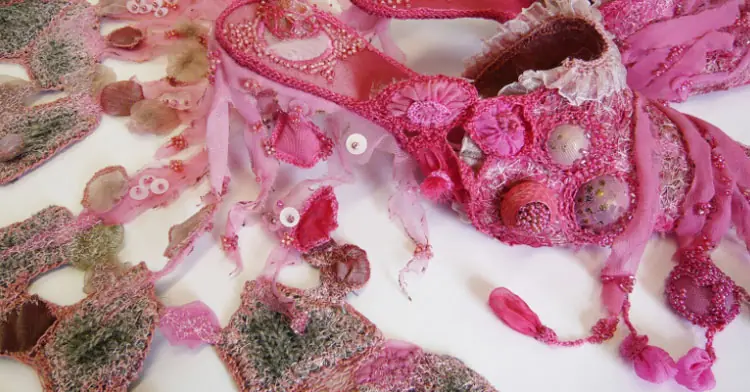
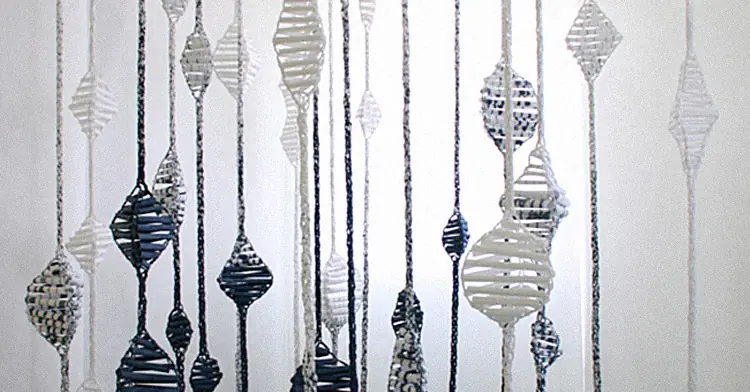
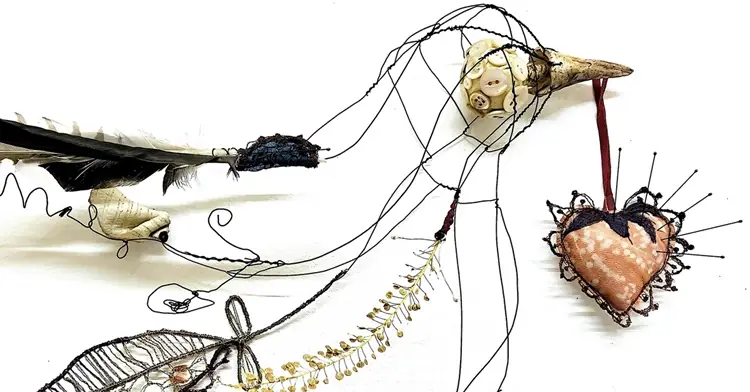
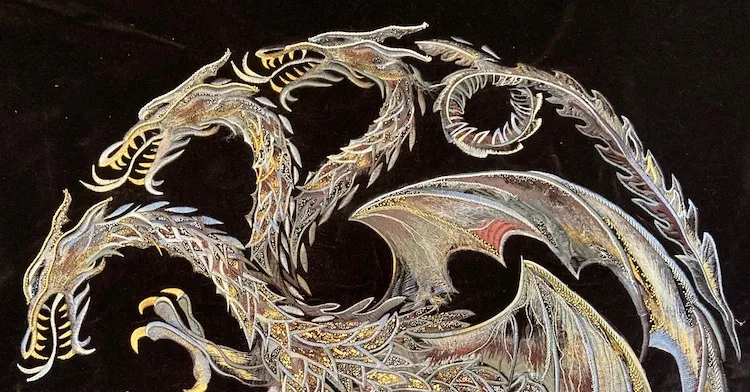
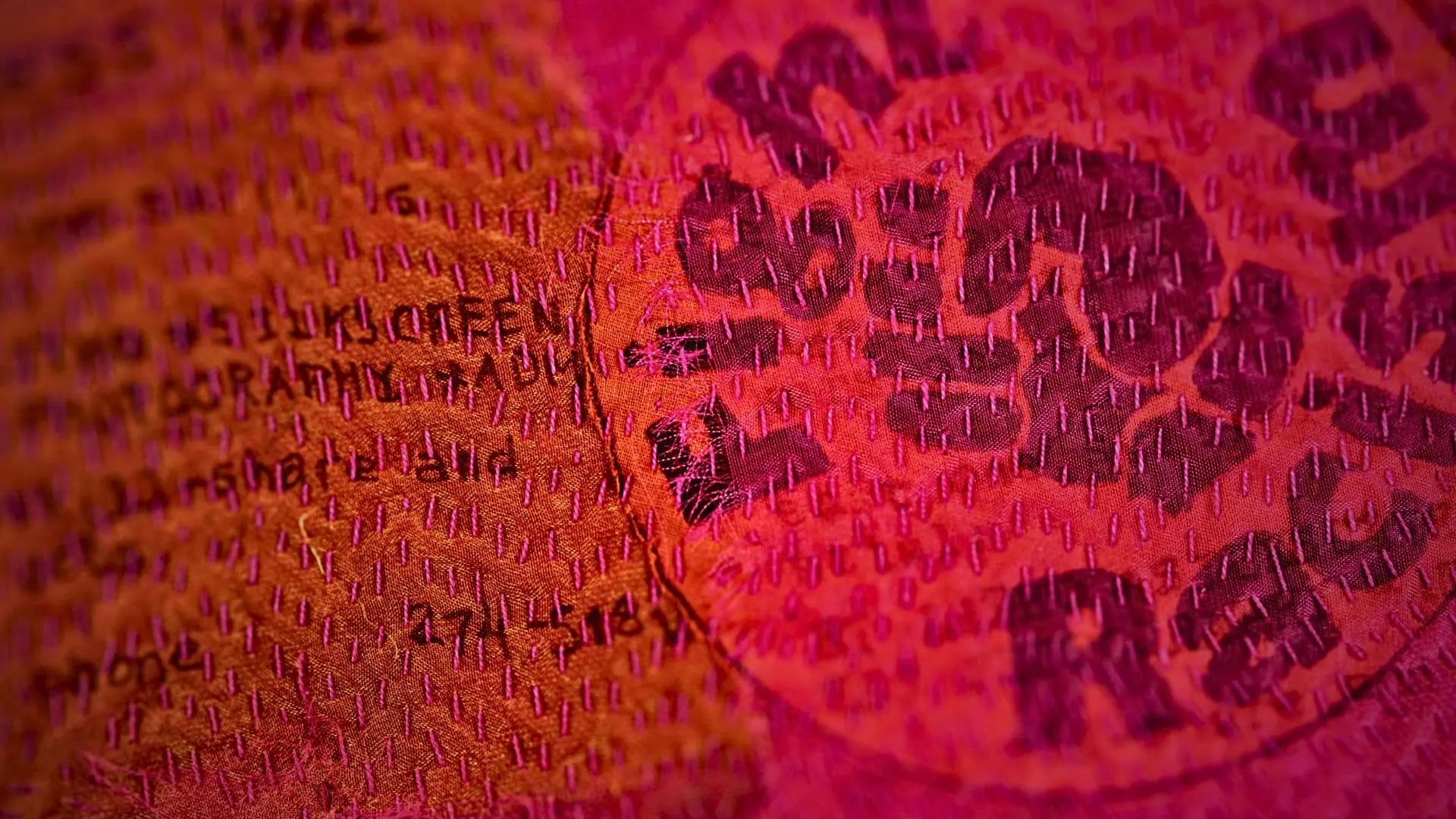
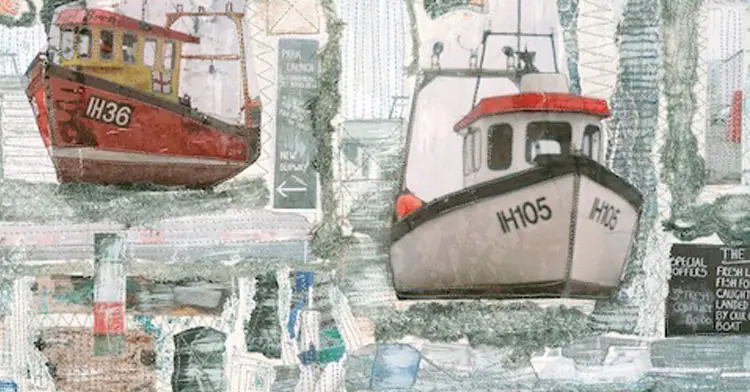
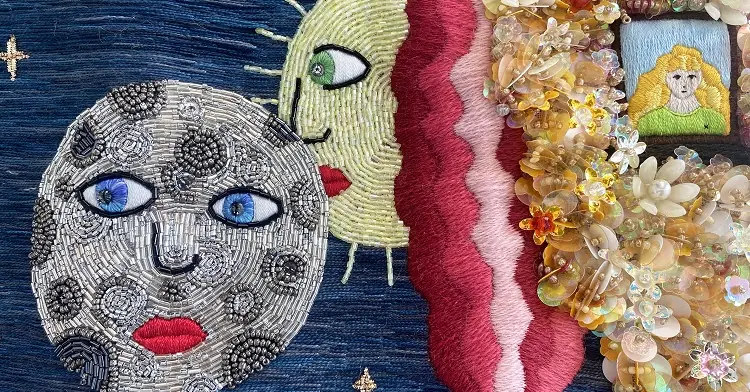
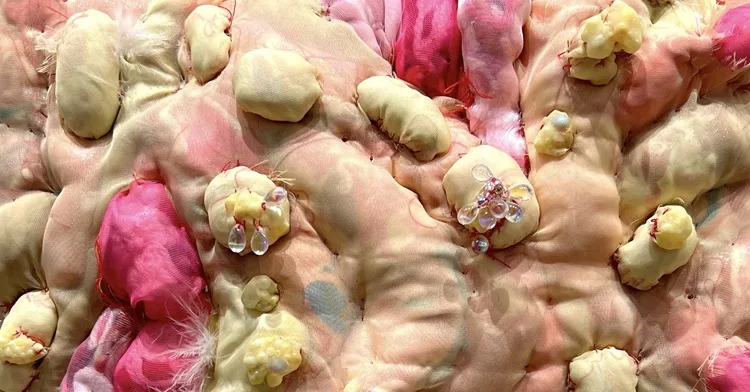
1 comment
lynn white
thank you for your time in recording the above thoughts. i am hoping to discover my sty